Andrei Gnezdilov: We want to see the Moscow River with new eyes
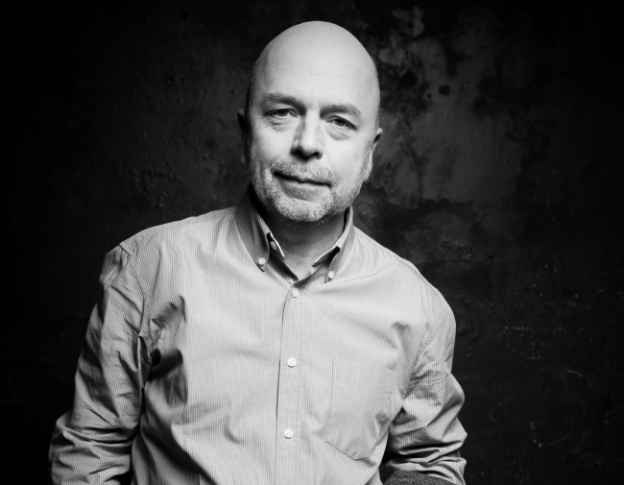
Already in mid-December, the winner of the competition on the development concept of Moscow River’s coastal areas will be announced. On what the organizers are expecting from the results of the contest, Archcouncil talked with the chief architect of the Institute of the General Plan of Moscow, and a member of the Architectural Council, Andrei Gnezdilov.
— Talking about the competition on the Moscow River, everyone at once remembers history: last time the shore was radically remodeled as part of the 1935 General Plan. What are the similarities and differences between these two projects? What was the primary goal then and now?
— The reconstruction in 1935 and the current competition are two completely different things, and I’m totally against such analogies. Yes, we are dealing with the same geographical feature — the Moscow River, but the parallels end there. At that time in front of city planners stood a strategic engineering task — to create a united water transport system in the European territory of the Soviet Union in order to move loads on it and transport passengers. Today there is no engineering task before us, and the goal is to make a favorable urban environment.
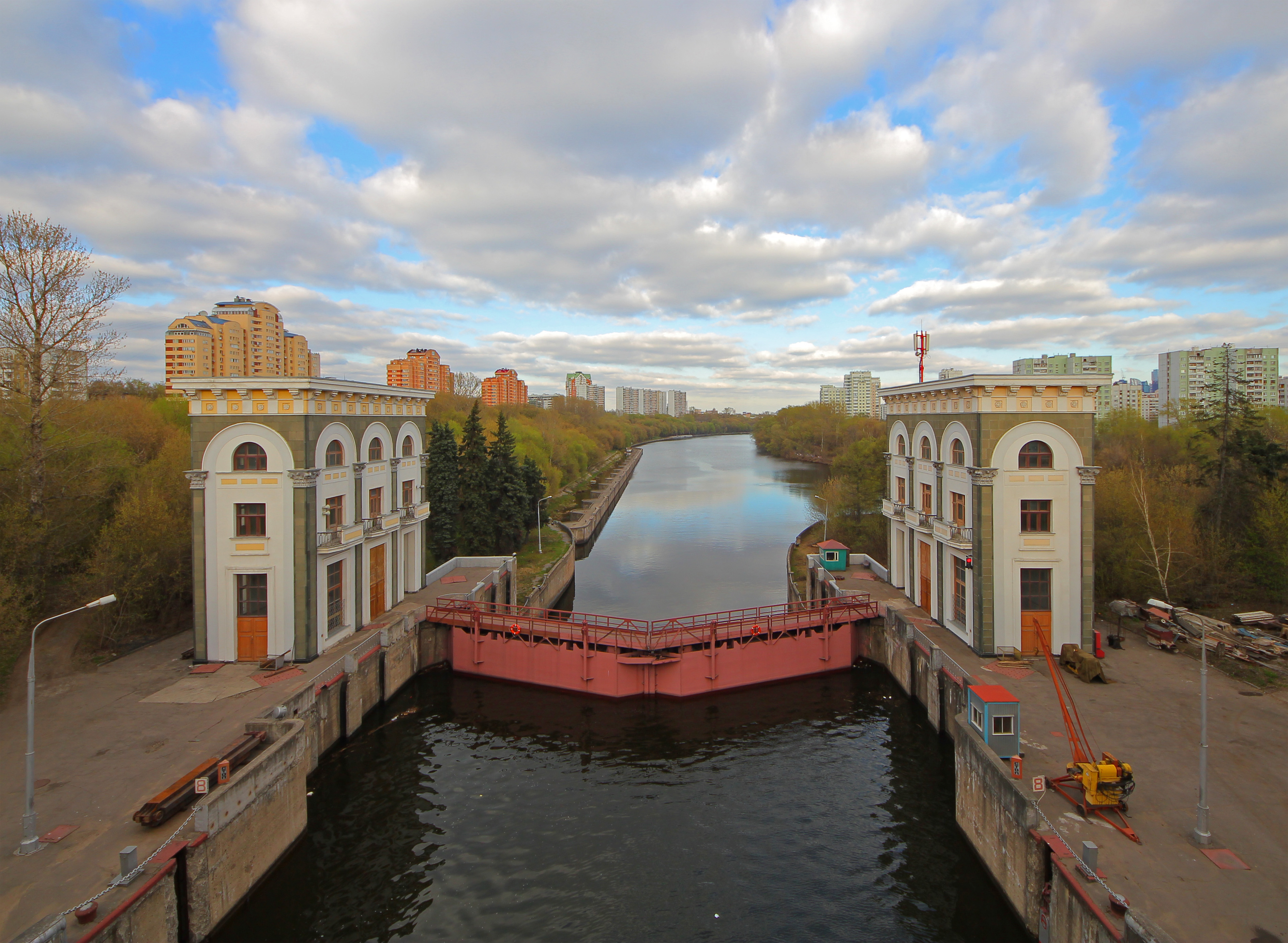

— Out of what was planned in 1935, what has been implemented and what has not?
— The idea then was to create a direct transport link along a river that has many curves. Therefore a straightening channel of canals and dams, which raised the water level, and gateways were built. The project was not implemented all the way, so some of the channels that were conceived did not appear. But most of the work was done. For example, Karamyshevskaya dam was constructed and Perervenskaya and Besedinskaya dams were reconstructed, in stages raised the water level, built the Khimkinskoye Reservoir, and much more. All of these actions to raise the water level and create local reservoirs led to regular shipping along the Moscow River. Before that, this was only possible for vessels with a draft of less than a meter.
— But all of this bypassed the center. But in fact at this time the river changed in the center too, embankments materialized.
— Yes, the idea was just to launch water transport, bypassing the city center. And the reconstruction of the central embankments was associated with the rise of the water level. If a high granite shore did not appear in Moscow, then the water would have just flooded the built-up environment. Along these embankments clad in granite roadways were laid, which was quite logical. This improved the city’s transportation system.

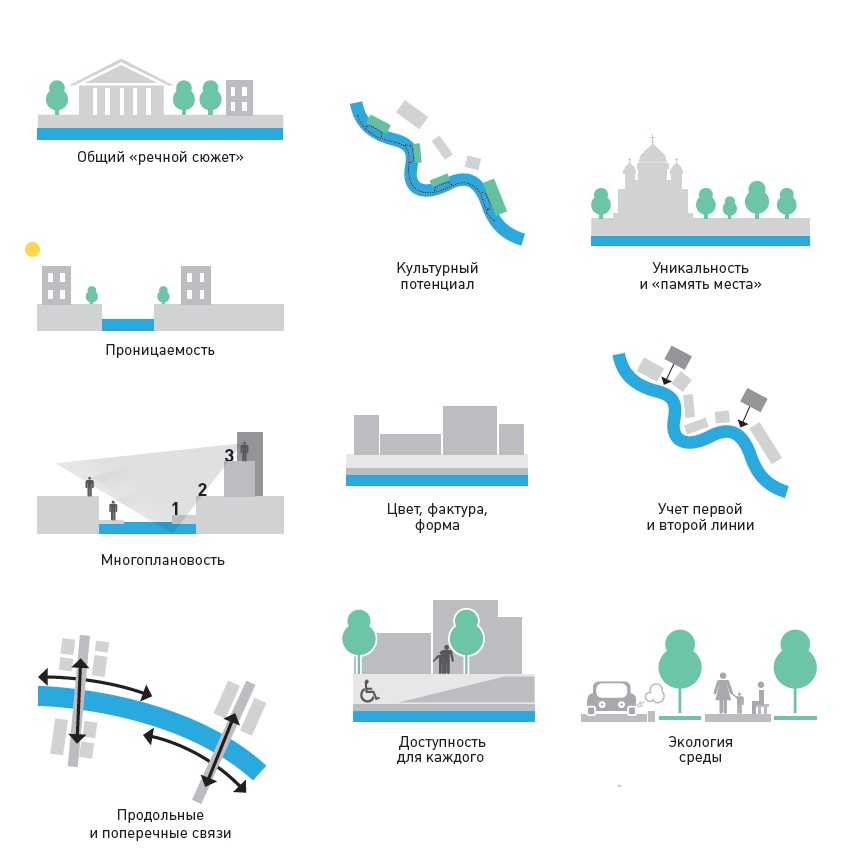
— That is, before us is a quite well-established system. What do you expect in this case from the competition participants?
— Well-established, but outdated. From the contestants we await a new perspective. All of us who design in Moscow, know about the city too many details and restrictions, and to some extent we are captives of our knowledge.
The Institute of the General Plan knows every little corner, and the Committee for Architecture and Urban Planning of Moscow is informed of all decisions taken. And as Einstein said, the discovery is made by a beginner who does not know that it cannot be done.
The competition is taking place very quickly. We cannot expect that in such a short time, the contestant will absorb all of our terms, limitations and conditions and will produce a proposal as one of us. He, fortunately, is not one of us. This is my view, which maybe is not supported by all. But I believe that the contestants should not have to know all the details which can tie up their resolve. That way we will not see anything new.
— Three sites have been proposed to the contestants for detailed design. What are these sites and why them specifically?
— This is, firstly, the area between Kutuzovsky Avenue and Krasnogvardeysky Passage, including the Moscow-City International Business Center, secondly, the region of the Stroginsky backwater, and, thirdly, the right part of the ZIL peninsula between the Moscow Little Ring Railway and the dead channel of the Moscow River, located next to the plot that was part of the ZIL competition. These three sites are fundamentally different in character. The areas of Moscow-City and Kutuzovsky Avenue are fraught with many complex problems since this is almost the center of the city, there are buildings there already, and on Kutuzovsky Avenue there are many architectural monuments, and in addition this is also the end (or beginning) of landscaped embankments.
Stroginsky backwater, on the contrary is a natural, very vulnerable territory that calls for a thoughtful response taking into account all environmental aspects. There the problems of waterlogging, lack of approaches, and an unequipped shore exist. So I would say that top-class landscape design will need to be shown there. And ZIL is an industrial zone with all its aggravating factors.

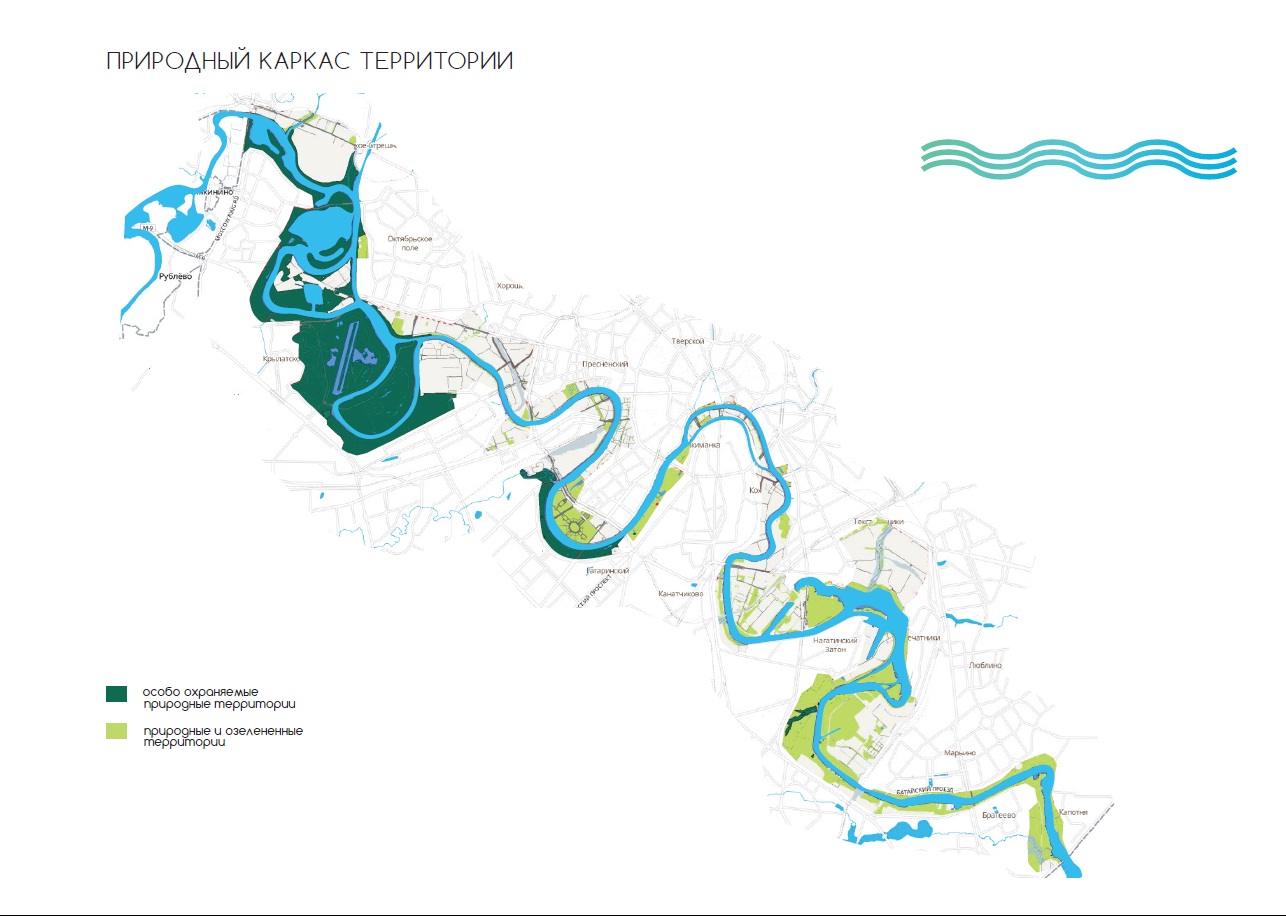
— Did you set any restrictions for the contestants?
— No, we did not set any restrictions. We provided them with all the necessary information, but did not establish a rigid framework.
— We do not know what the contestants will offer, but we roughly understand what is missing in today’s Moscow. For example, now everyone is saying that Moscow needs regular water transport.
— This is a complex topic. A couple of days ago we sailed with colleagues from Moscow-City to Andropov Avenue and three times rotated 180 degrees. The Moscow River is very winding. Due to its geometry it is not suitable for rapid movement, so for speedy routes only certain areas where there are fewer bends can be selected. There are such proposals.
Water doubles of loaded highways can be made so that a person at some point transfers to river transport, and then back to ground transport or on the metro. But this raises a number of problems. And one of the most important is the lack or inadequacy of piers next to metro stations.
Areas where the route on water would be really justified in Moscow are not so many: from Nagatinsky backwater to the center of the river is available as an alternative to the loaded Varshavskaya highway, and it’s possible to restore the route along the Moscow-Volga Canal and Khimkinskoye Reservoir. I can name a number of other areas, but they are few. Besides, buying a fleet of speed vessels is a huge expense which neither the city nor a private company could handle alone.
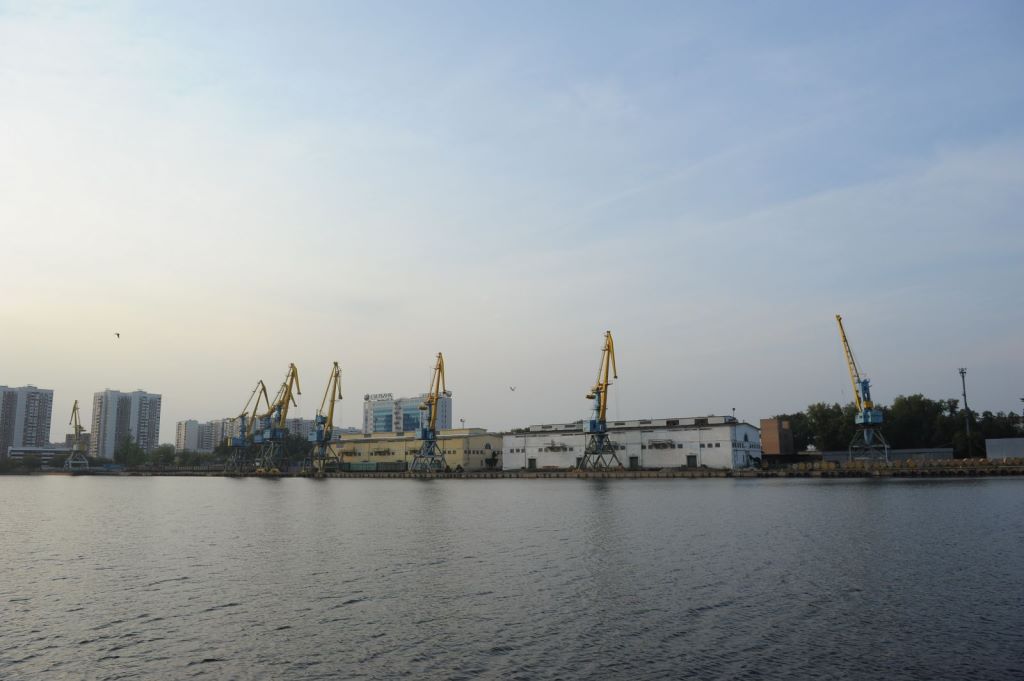

— But now even for tourists who are not pressed for time, to sail from one point to another is almost impossible — only to cruise and come back to where they started.
— Certainly it is boating season now indeed — but these are sightseeing tours, not transport. Vessels sail where there is something to see, and there are not so many such places in Moscow. And here again we come to the necessity of upgrading the shores. Radisson did not accidentally invent floating restaurants. People have to occupy a place aboard a vessel, because to admire the banks in Moscow, frankly, is difficult.
— What, in your opinion, should be on embankments?
— You know, I do not advocate a direct approach to the water. So I would not refer to the embankment itself, but rather the built-up environment that accompanies it. There should be all the elements present in any city: cafes, exhibition halls, clubs, and so on. Look, for example, at Budapest’s embankment. It’s not really possible to approach the river. Along the river there is a tram line, which you can pass under in several places through 2 meter high passages. And near the water, for the most part, there is nothing to do, there’s only a pier. And all the cafes, snack bars and some public places are located in buildings, with terraces that go down to the river, but not to the water. In general, we need to take a look at analogues.
See how the London quay is getting along... I would not place redeveloped facilities directly on the shore, but they should be present, and now they are not.
To draw people to the embankments at the very least some simple things are needed — snack bars and toilets. At present most of our waterfront is absolutely not user friendly and not a public space. To walk along the Kremlin embankment simply is not interesting. You walk half a kilometer along the Kremlin wall and feel somehow uncomfortable: there are no passersby, on the left is the fortress, on the right the river, windy ...
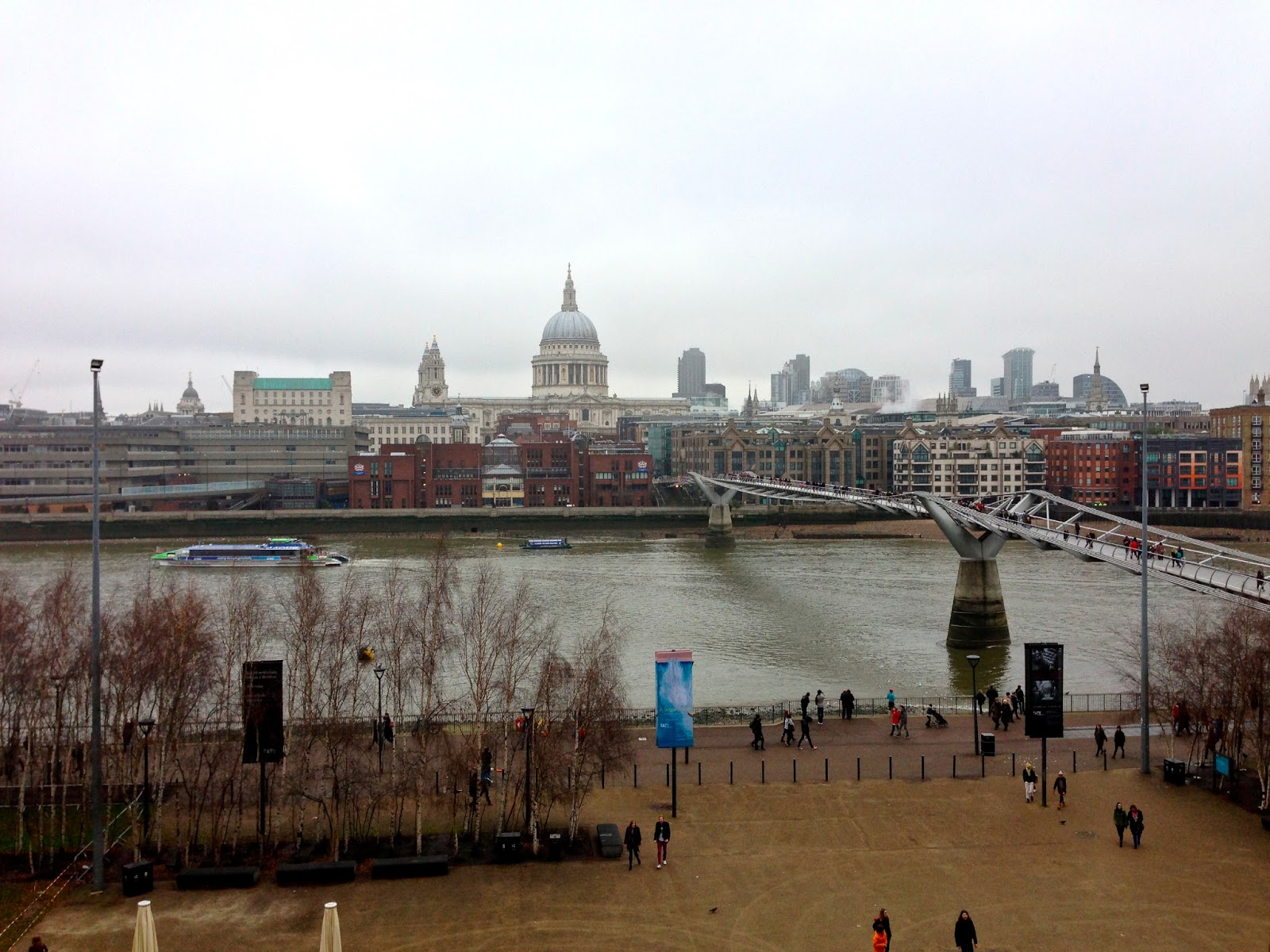
— That is, we should not expect low embankments with direct access to the water?
— Low embankments are in direct conflict with water transport. If we want speed vessels to go down the river, the shores cannot be low, waves will just flood them.
— And what about swimming in the Moscow River? This topic is now also actively discussed.
— Here I am also not a supporter. Nobody is arguing with the fact that the water should be clean, but in the coming years, we can hardly achieve such indicators that it would really be possible to swim in it.
Today treatment facilities even on storm sewers are not everywhere, the historic center especially has this fault. Melting snow, chemicals — all of that is washed off the road, falls into storm sewers and into the river. In addition, swimming would have to be in designated areas where there are lifeguards. So I do not support the idea of swimming along the entire river.

— It seems that lately there have been a lot fewer barges on the river. Does a modern city need freight water transport?
— Yes, certainly, there are fewer barges because industrial facilities are closing. But some materials like gravel ard sand are still actively transported. And rightly so, because one barge can carry as much as a hundred trucks. And that of course greatly relieves the road network. Only along the river can large-scale structures for the construction of the bridges and overpasses be brought. Because if such a structure is brought by a truck trailer, it turns into a huge event with road closures and a traffic police escort. So the transport function of the river cannot be completely eliminated. But there should be specific policies.
— On the one hand, Moscow is struggling with road transport, and on the other, it is already clear that the roadways will not be removed from the embankments. What policies should be followed in this matter?
— The calculations of our transport specialists show that cutting off the embankments from the city transport system will lead to a collapse. For example, when the Kremlin Embankment is blocked, the Garden and the Third Ring Road immediately come to a standstill. But capacity reduction — narrowing or reducing the number of lanes — is quite possible. And, most likely, this will be done. Of course this will be executed with an integrated implementation of all activities related to a change in the city’s transport system. We are not saboteurs to simply ban cars there, where people do not walk anyway. If at this site there are no people, then why torment transport? There must be a comprehensive design vision.
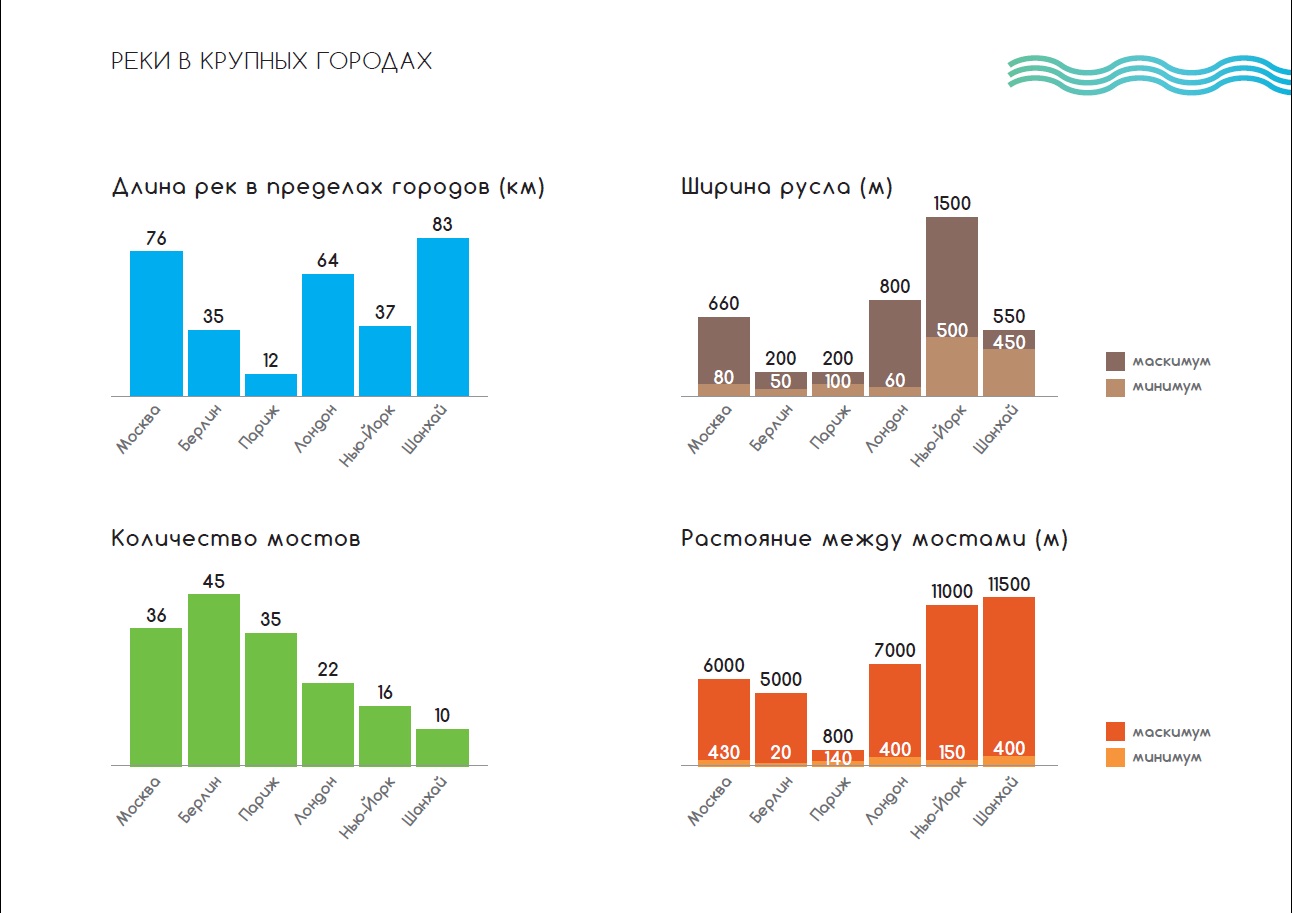
— The embankments are so loaded because there are few bridges in the city and people are forced to go along the river an extra time.
— Yes, indeed bridges are severely lacking. In fact, our city road network is simply divided by the river: it’s on one side and on the other, but to cross, one has to do spend excess mileage on a few kilometers. In the South-Eastern district for example, there is an area of 14 km without a single bridge. There is only the Brateevsky bridge, while all the other connections are not implemented. But this is a separate issue, about which we can talk for hours.
— Currently the embankments of Moscow, of course, are not too user friendly to people, but made in the same style as the surrounding Stalinist buildings. Do you want to see the shore quite different, like the Krysmkaya embankment?
— These are questions of architectural design. If it is inadequate, it is unlikely that someone will approve it. Why change good and very expensive granite to something else if it’s not necessary? But again, we want to see a new perspective. And we will proceed from what is proposed. To talk in advance about such specific things is pointless.
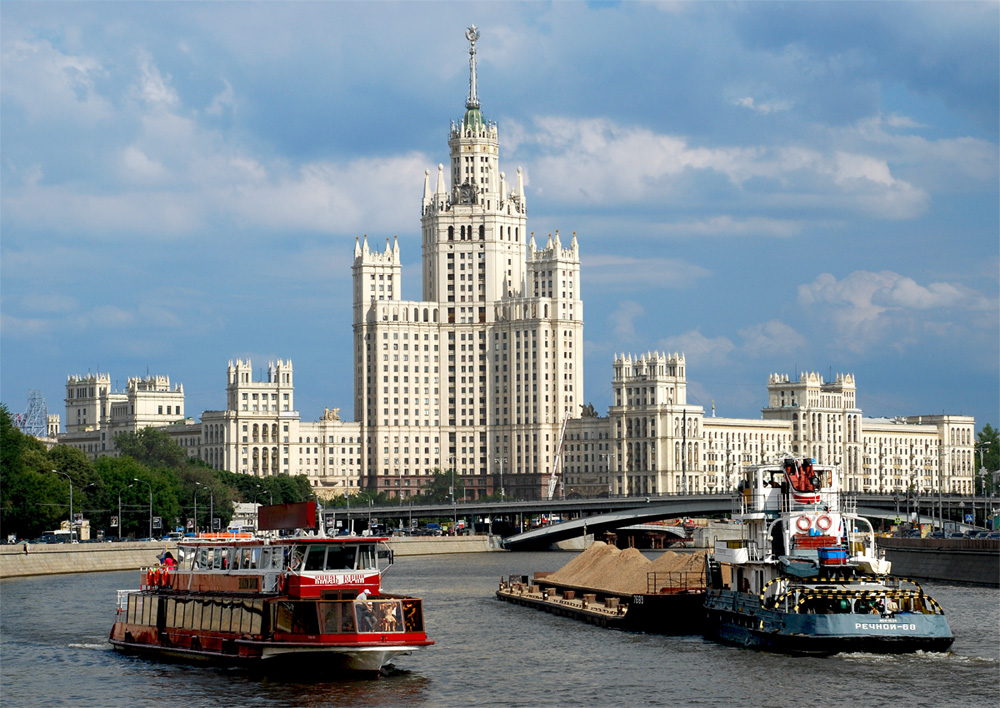
— From the results of the competition something revolutionary is expected. It seems that Moscow will change dramatically. Is this expectation justified? How overarching will this renovation be?
— This is a misconception. We truly want to see the city with fresh eyes and hope to realize the proposed design. But nobody is going to demolish everything to the ground. The city needs a thoughtful and integrated approach, and that’s what we want to get. However no one is going to pursue unreasonable changes. When we talk about the embankments, we should not forget that they exist as part of the landscape.
The Gorky Park embankment is only possible in Gorky Park, where the territory is so full of various public facilities and is interesting for visitors. The same does not need to be done, for example, along the Kremlin walls, where the whole surrounding area is quite different. The competition is not a magic wand.
This is a new creative perspective on a complex network called “Moscow River in the city.” When we come to this topic, then immediately we are confronted with a huge amount of nuances and contradictions. So in a few words you can’t say much. In antiquity this was simple: here’s a forest, a river flows through it, it has a right and left bank. And here is the city. And there is no one formula for the whole river. There are different approaches that we want to see from this competition.
- Tags:
- Andrei Gnezdilov |
- competitions |
- Moscow River |
- embankments |
- public spaces




